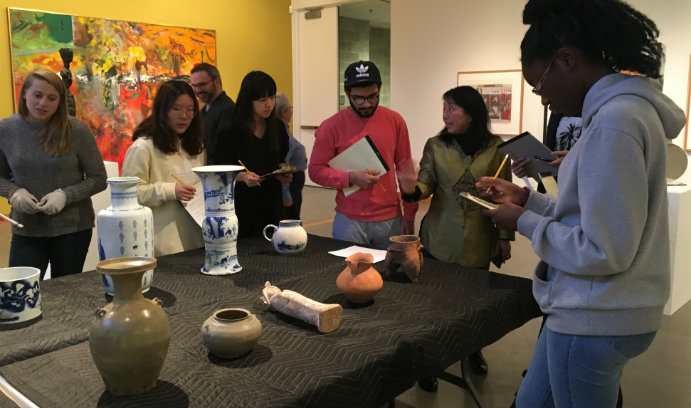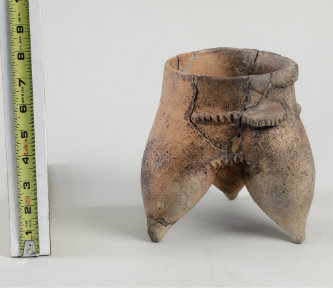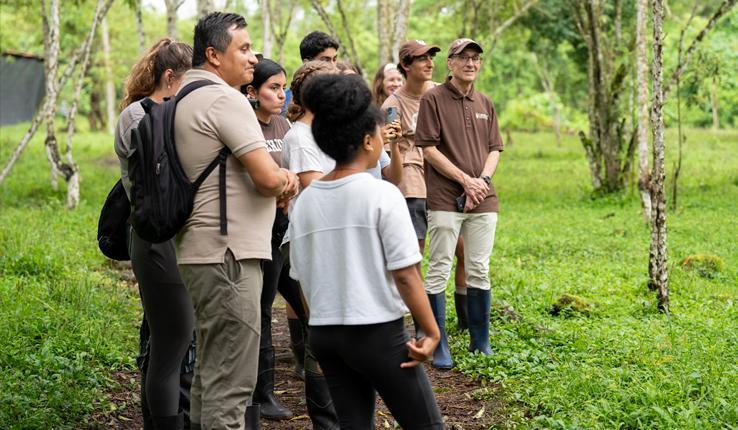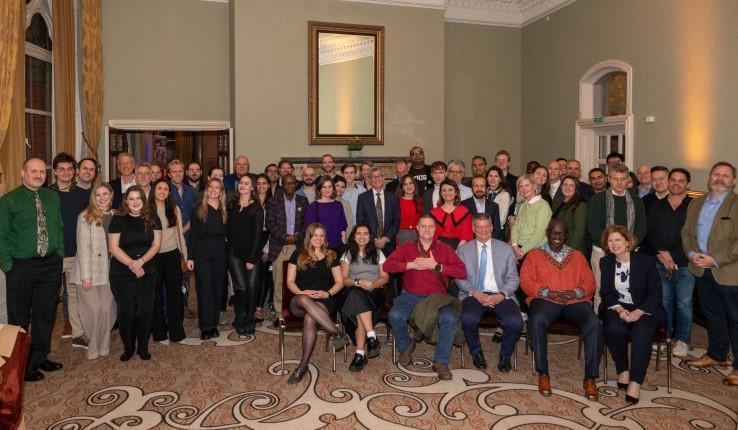Lehigh Students Explore Ancient Asia through Chinese Ceramics

Dongning Wang, adjunct lecturer of Modern Languages and Literature at Lehigh, teaches students about Asian history and culture through the Chinese porcelain pieces that are part of LUAG's collection. Photo: Erin Hom
Lehigh holds thousands of years of history in Chinese porcelain ceramics: vases, wine jars, vessels, figurines and brush pots.
First-year students in an Asian Studies seminar [ASIA090] recently got an up close look at 18 of the pieces, which were put on display in the Lehigh University Art Galleries • Teaching Museum (LUAG). In all, the Chinese Ceramics Collection has more than 100 objects, many of which date back to the Neolithic Period, and from the Han Dynasty (206 BCE-220 CE) and the Qing Dynasty (1644-1911).
As part of the four-part seminar, “Globalization in Asia Through Time and Space,” students learn about different aspects of Asian culture in an effort to develop an understanding of the dense Asian history through disciplines such as engineering, film and anthropology.
During the presentation, Dongning Wang, adjunct lecturer of Modern Languages and Literature at Lehigh, explained how the ceramic pieces bridge the various Asian cultures.
“The collection of LU Chinese ceramic objects can reflect how ancient people think and act within the history and culture environments, and mirrored the human path on social activities and technological process along the changes and development of their civilization,” Wang said.
“By analyzing these ceramics, we are not only observing their shape, form and color but also understanding their function and appreciating the innovative ideas that [were] involved with the production process.”
Among the collection, the oldest object dates back to 2200 to 1300 BCE, making it around 3,300 to 4,200 years old. Wang said the clay object was possibly used as a cooking vessel to steam food.
In 2009, Lehigh received a $300,000 grant from the Henry Luce Foundation for the “Chinese Bridge Project,” which was designed to educate Lehigh students on Asian culture, language and history. A Chinese wood arch bridge was constructed on campus in 2011 and the Chinese-Heting Harmony Pavilion was built along the Greenway in South Bethlehem and dedicated in 2013.
Giving Lehigh students hands-on experience with the LUAG art objects is another way to allow students to gain a deeper understanding of the cultural and historical concepts of Asia, and also Lehigh’s long-standing relationship with China, Wang said.
Last year, Wang’s students wrote a book that revealed the otherwise unknown history of Chinese students studying at Lehigh, dating back to the 19th century. Through years of extensive research of Lehigh history, the book outlines the story of students from China who were sent to the United States to study at institutions such as Lehigh. Each page features a specific Chinese student from the time and discusses what they studied, the organizations they joined while on campus, and where went after graduating or leaving Lehigh.
Said Wang: “The Lehigh's connection with China through the material art or objects provides an important culture diversity on campus and could benefit the students' learning experience through appreciation these historical artifacts.”
Story by Erin Hom
Posted on:





